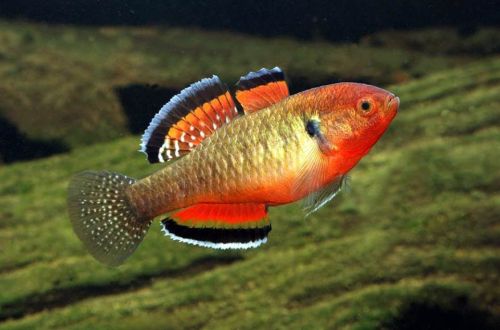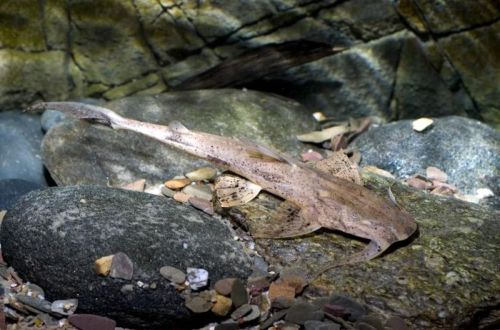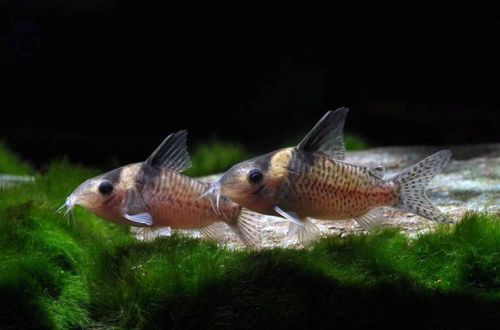
Cuban swordsman
Cuban swordsman, English trade name Tuxedo Swordtail. The fish is a hybrid between the common Green Swordfish and the Pecilia Tuxedo. From the first, males inherited a characteristic “sword” on the caudal fin, which is not found in females. From the second species acquired a unique body color.

A distinctive feature of the color is the contrast between the black pigment in the tail part of the body and light shades of yellow, orange or red. A similar pattern, which combines “light top and dark bottom”, resembles a suit, so in English-speaking countries the fish was called Tuxedo, which means “tuxedo”.
In Russian, a different name has taken root with the word “Cuban”. The fact is that the first batches of this breed of fish were delivered to the USSR by employees of diplomatic missions that worked during the Cold War on the island of Cuba.
Brief information:
- The volume of the aquarium – from 50 liters.
- Temperature – 16-28°C
- Value pH — 7.0–8.5
- Water hardness – medium or high hardness (10–25 GH)
- Substrate type – any
- Lighting – moderate or bright
- Brackish water is permissible in a salt concentration of up to 15 g per 1 liter
- Water movement – light or moderate
- The size of the fish is 4–5 cm.
- Food – any food
- Temperament – peaceful
- Content alone, in pairs or in a group
Maintenance and care
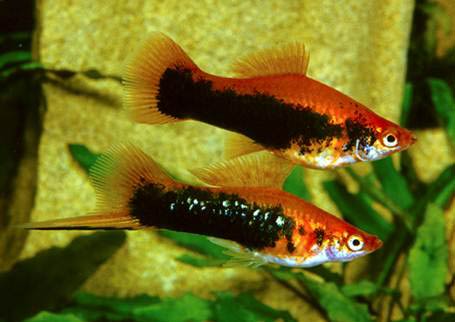
Although this hybrid is called the Cuban Swordbearer, it is still closer to the Pecilia, which affected the characteristics of the content.
The relatively modest size of adults makes it possible to keep them in small tanks. For a group of 3-5 fish, 50 liters is enough. The design is arbitrary, selected at the discretion of the aquarists. However, the presence of shelters is welcome, for example, in the form of thickets of living plants, weaves of snags. They will become a refuge for females and subdominants from the excessive attention of alpha males.
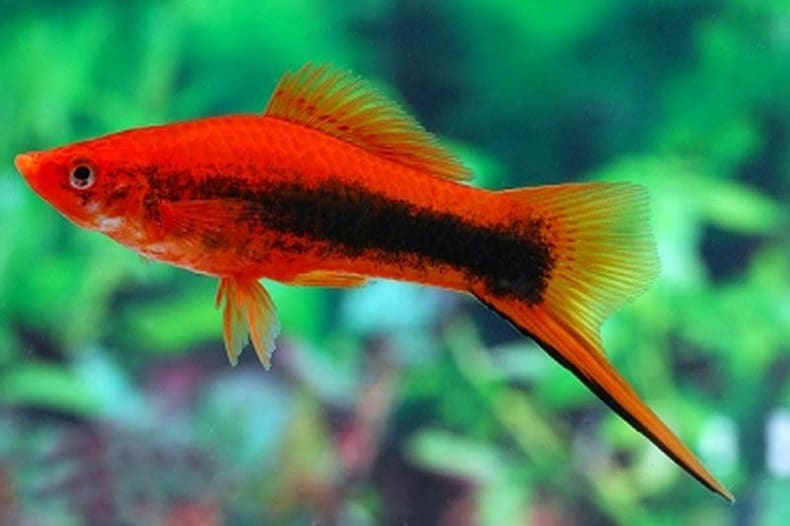
Successful long-term management depends on maintaining stable water conditions within an acceptable range of temperatures and pH and GH values. Fish prefer slightly alkaline water and do not do well in an acidic environment.
Food. They belong to the omnivorous species. They will accept most popular feeds, in dry, frozen and live form. The daily diet can consist entirely of flakes and/or granules, provided that they contain all the necessary vitamins and trace elements.
reproduction features. Like other viviparous species, the Cuban swordsman is easy to breed. It is worth remembering that crossing can occur not only between representatives of the same breed, but also with other varieties of the Sword and Paecilia, as well as with closely related species, such as Molinesia.



